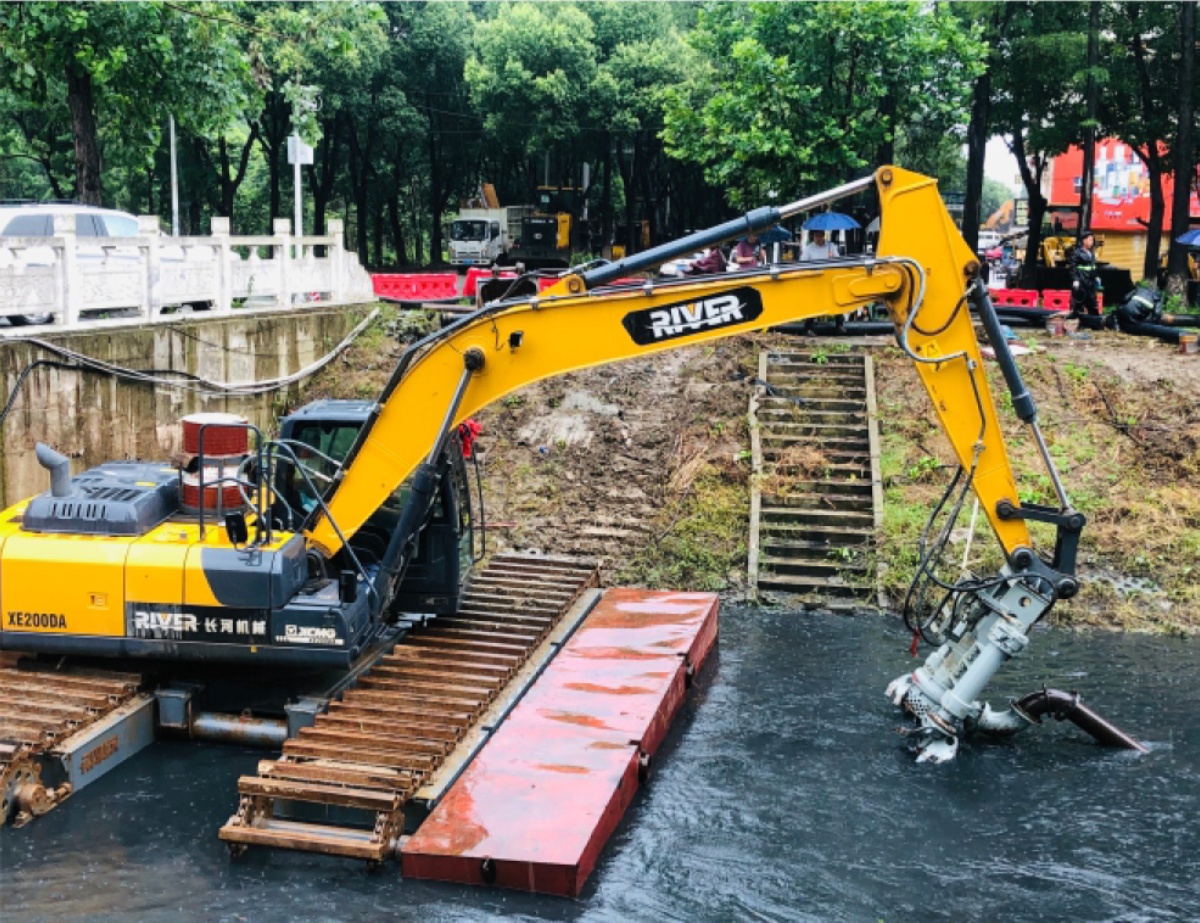River dredging plays a vital role in water resource management, flood control, and ecological restoration. However, traditional dredging methods often face challenges such as low efficiency, high costs, and severe environmental disturbance. Complex terrains like marshes, shoals, and deep-water areas make it even harder for conventional equipment to operate.
This is where amphibious excavators come in. With their unique design that integrates a specialized excavator undercarriage and floating pontoons, they achieve true “amphibious” operation. Without the need for temporary trestles or cofferdams, they can directly enter the water, simplifying construction processes and reducing project costs. Their excellent mobility and stability allow them to perform reliably even in harsh environments.
Here are three key application scenarios where amphibious excavators excel in dredging projects:
Scenario 1: Marshland and Wetland Eco-Dredging
In traditional river dredging projects, standard crawler excavators often sink into mud and face mobility limitations. Amphibious excavators, with their pontoon undercarriage, can move freely in shallow water and marshy areas, offering excellent flotation and stability. By equipping them with long reach booms and hydraulic cutter suction pumps, they efficiently handle river dredging, silt removal, and desilting works—greatly improving efficiency while reducing labor and transportation costs.
Scenario 2: River Dredging
In rivers and lakes, fluctuating water levels often restrict the construction window for traditional equipment, leading to low efficiency. Amphibious excavators can easily adapt to water level changes and continue working efficiently whether in shallow water or on mudflats. They are widely used for slope trimming, riverbed excavation, and silt removal, effectively restoring flood discharge sections, ensuring smooth water flow, and enhancing flood control capacity.
Scenario 3: Urban Rivers and Landscape Water Maintenance
In urban flood control and drainage projects, construction sites are often flooded and muddy. Thanks to their strong adaptability, amphibious excavators can easily perform tasks such as channel widening, drainage ditch excavation, embankment reinforcement, and silt clearance. During extreme weather events or sudden floods, they are also frequently deployed as emergency rescue equipment on the frontlines.
Conclusion
With their outstanding performance in river dredging, lake management, and urban flood control, amphibious excavators have become indispensable equipment for contractors and environmental projects. Whether working in silted rivers or shallow marshy terrains, they operate with ease—delivering higher efficiency and lower overall costs.

